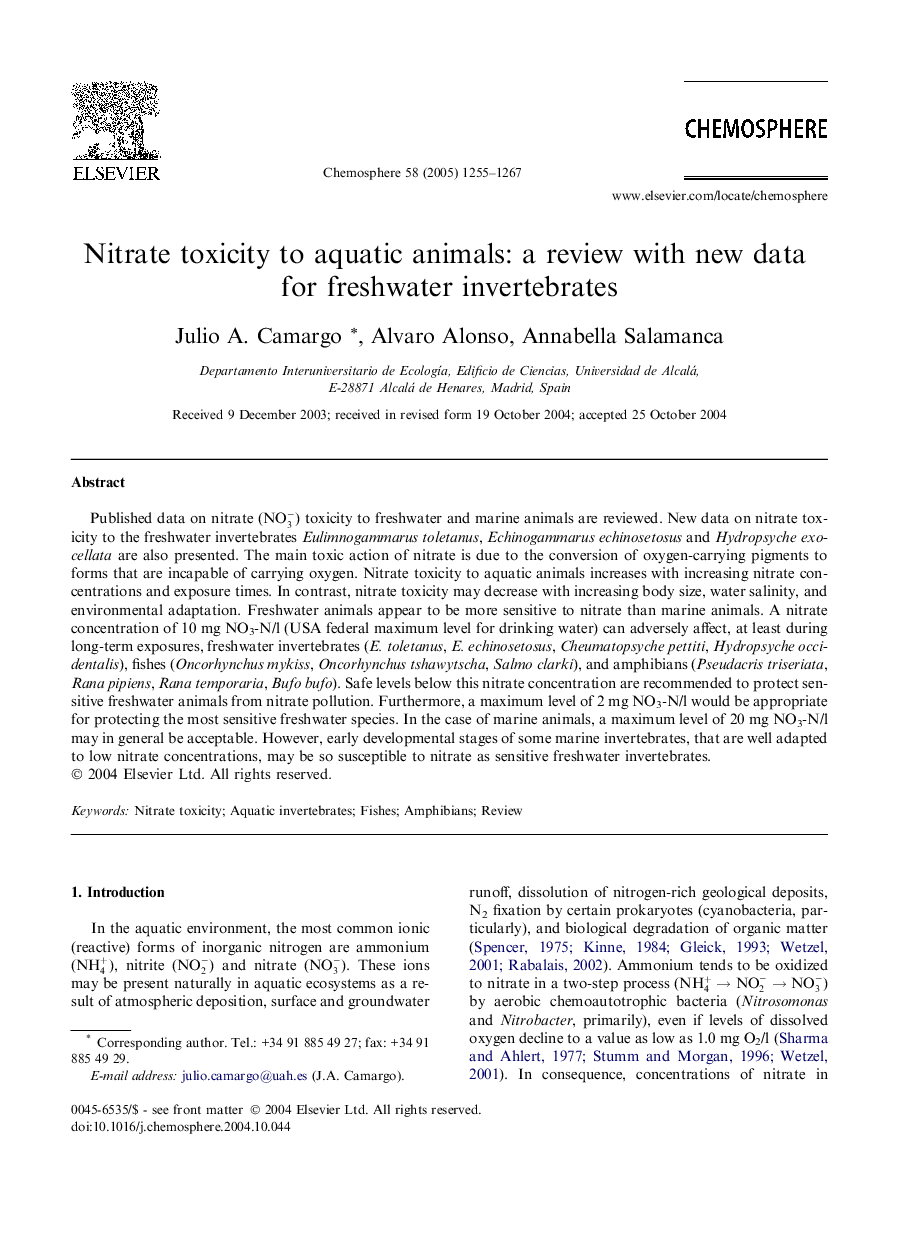| کد مقاله | کد نشریه | سال انتشار | مقاله انگلیسی | نسخه تمام متن |
|---|---|---|---|---|
| 9451672 | 1307835 | 2005 | 13 صفحه PDF | دانلود رایگان |
عنوان انگلیسی مقاله ISI
Nitrate toxicity to aquatic animals: a review with new data for freshwater invertebrates
دانلود مقاله + سفارش ترجمه
دانلود مقاله ISI انگلیسی
رایگان برای ایرانیان
کلمات کلیدی
موضوعات مرتبط
علوم زیستی و بیوفناوری
علوم محیط زیست
شیمی زیست محیطی
پیش نمایش صفحه اول مقاله

چکیده انگلیسی
Published data on nitrate (NO3-) toxicity to freshwater and marine animals are reviewed. New data on nitrate toxicity to the freshwater invertebrates Eulimnogammarus toletanus, Echinogammarus echinosetosus and Hydropsyche exocellata are also presented. The main toxic action of nitrate is due to the conversion of oxygen-carrying pigments to forms that are incapable of carrying oxygen. Nitrate toxicity to aquatic animals increases with increasing nitrate concentrations and exposure times. In contrast, nitrate toxicity may decrease with increasing body size, water salinity, and environmental adaptation. Freshwater animals appear to be more sensitive to nitrate than marine animals. A nitrate concentration of 10 mg NO3-N/l (USA federal maximum level for drinking water) can adversely affect, at least during long-term exposures, freshwater invertebrates (E. toletanus, E. echinosetosus, Cheumatopsyche pettiti, Hydropsyche occidentalis), fishes (Oncorhynchus mykiss, Oncorhynchus tshawytscha, Salmo clarki), and amphibians (Pseudacris triseriata, Rana pipiens, Rana temporaria, Bufo bufo). Safe levels below this nitrate concentration are recommended to protect sensitive freshwater animals from nitrate pollution. Furthermore, a maximum level of 2 mg NO3-N/l would be appropriate for protecting the most sensitive freshwater species. In the case of marine animals, a maximum level of 20 mg NO3-N/l may in general be acceptable. However, early developmental stages of some marine invertebrates, that are well adapted to low nitrate concentrations, may be so susceptible to nitrate as sensitive freshwater invertebrates.
ناشر
Database: Elsevier - ScienceDirect (ساینس دایرکت)
Journal: Chemosphere - Volume 58, Issue 9, March 2005, Pages 1255-1267
Journal: Chemosphere - Volume 58, Issue 9, March 2005, Pages 1255-1267
نویسندگان
Julio A. Camargo, Alvaro Alonso, Annabella Salamanca,